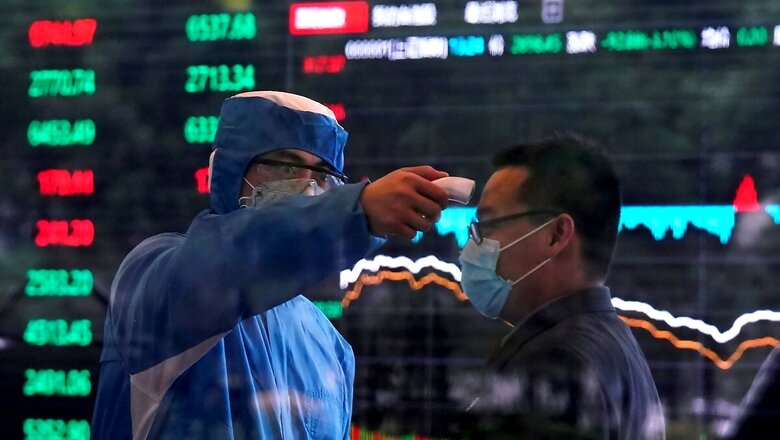
views
Asian shares and most currencies held tight ranges on Monday, as investors awaited developments on US fiscal stimulus and coronavirus vaccines amid a resurgence of infections in Europe.
MSCI’s broadest index of Asia-Pacific shares outside Japan was 0.1% weaker, though it was not too far from a June 2018 peak at 568.84.
Australia’s benchmark index slipped 0.5% while New Zealand’s stumbled 0.6%. Chinese shares opened in the red with the blue-chip index down 0.3%.
“While the economic recovery continues, momentum is clearly slowing,” Kathy Bostjancic, chief US financial economist at Oxford Economics wrote in a note.
“The second phase of the recovery will likely be bumpy and fraught with pitfalls,” Bostjancic added.
“The development of the pandemic remains the overriding factor driving the economy, discussions on the fiscal policy, and ultra loose policy by the Fed.”
On Friday, US stocks declined with the Dow down 0.9%, the S&P 500 losing 1.1% and Nasdaq Composite dropping 1.07%. [.N]
The signal from futures was not very optimistic, with the S&P 500 e-minis falling 0.1% and pointing to a weak start for Wall Street on Monday.
Japanese markets were closed for a public holiday.
Coronavirus cases have now surpassed 30 million, casting a gloomy pall over prospects of a V-shaped economic recovery.
The biggest threat to global growth is a resurgent pandemic, with analysts fearing growth and inflation could surprise on the downside in the coming year. A lack of material development on US stimulus package is also an overhang, they said.
Adding to worries, European countries from Denmark to Greece announced new restrictions on Friday to curb surging coronavirus infections in some of their largest cities, while Britain was reported to be considering a new national lockdown.
“Where is the inspiration for the equity bulls, I ask? We have diminishing prospects of fiscal stimulus, crazy valuations and a firm focus on an ugly US election and COVID shutdowns, which suggest short-term risks for equities,” said Pepperstone strategist Chris Weston.
“Of course, the lack of early movement may be a red herring as the news, perhaps the Oracle/TikTok deal aside, can hardly be perceived as positive, but there has been no risk aversion expressed in FX, through this illiquid period.”
The dollar slipped 0.1% against a basket of major currencies to 92.855.
Against the safe haven yen, the greenback eased 0.2% to 104.35 to drift closer to a recent 3-1/2 month trough.
The euro was up 0.25% at $1.2946 while the risk-sensitive Australian dollar was also slightly higher at $0.7304. The British pound was up 0.25% at $1.2947.
Currency strategists said the dollar weakness may signal more volatility ahead of the Nov. 3 US elections where Republican President Donald Trump will face off against Democratic challenger Joe Biden.
Pepperstone’s Weston expects the safe-haven yen to remain well bid.
“In a world where real rate differentials increasingly drive capital flows, in developed market, FX Japan has the highest and positive real yields, and even more so when adjusting for hedging costs,” Weston said.
“This makes the JPY very attractive, especially against the GBP and USD, where real rates are not just negative but in the case of the Fed, they are actively seeking lower rates out.”
In commodities, US crude slipped 2 cents to $43.13 a barrel. Brent crude fell 1 cent to $41.1. Gold was slightly lower, with spot prices at $1,951.3 an ounce.

















Comments
0 comment